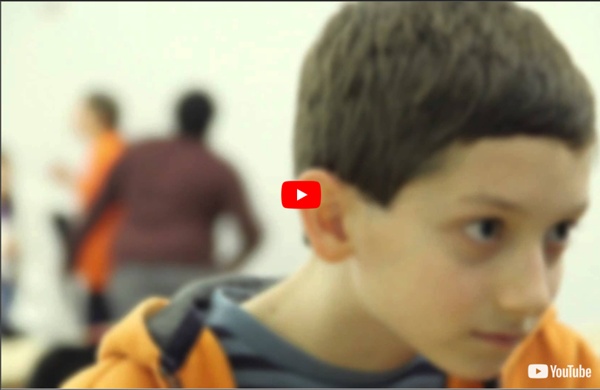



http://www.youtube.com/watch?v=wLoMs-OzimU
Related: A Guide for Parents: Reinforcement & Punishment in TeenagersPositive/Negative Reinforcement and Positive/Negative Punishment February 5, 2013 7:40 pm Published by Kelley Prince M.A., BCBA In Applied Behavior Analysis, there are two types of reinforcement and punishment: positive and negative. It can be difficult to distinguish between the four of these. Therefore, the purpose of this blog is to explain the differences in order to help parents and professionals develop appropriate interventions to improve behavior. Reinforcement Reinforcement is used to help increase the probability that a specific behavior will occur in the future by delivering or removing a stimulus immediately after a behavior.Another way to put it is that reinforcement, if done correctly, results in a behavior occurring more frequently in the future.
Reinforcement vs. Punishment: Changing BehaviorBehavioral Health Works Being a parent has been known as the best thing ever BUT also the most challenging endeavor you will encounter in your lifetime. Parents strive to raise a healthy and happy child that will one day grow up as a full-fledged mature and independent adult. But to successfully accomplish this goal, a parent must set forth structure or rules throughout their childhood to help them understand and be realigned when their behavior needs to be modified. When a parent recognizes the need to change a behavior, they will likely end up using either reinforcement, punishment, or a mixture of both.
Teens May Learn Best with Positive Reinforcement A new study finds that adolescents focus on rewards and are less able to learn to avoid punishment or consider the consequences of alternative actions. University College-London investigators compared how adolescents and adults learn to make choices based on the available information. Investigators tracked the way in which 18 volunteers aged 12-17 and 20 volunteers aged 18-32 completed tasks in which they had to choose between abstract symbols. Each symbol was consistently associated with a fixed chance of a reward, punishment, or no outcome.
How Negative Punishment Works Negative punishment is an important concept in B. F. Skinner's theory of operant conditioning. Discipline strategies for teenagers Around the time that your child starts secondary school, you might need to adjust your approach to discipline. Effective discipline for teenagers focuses on setting agreed limits and helping teenagers work within them. Teenage discipline: the basics Discipline isn’t about punishment. Why Positive Reinforcement is Better than Punishment - Clever Little Monkey Psychologists often encourage parents to adopt strategies of classic behaviour modification to alter their children’s challenging, naughty behaviours instead of using positive reinforcement techniques. The theory is that the immediate consequence that you receive after performing an action makes you more or less likely to repeat the action in future. Punishment strategies are old news Historically, this meant that we often focused on punishment strategies, for example giving children hidings or extra homework and chores as a consequence to their undesirable behaviour. However punishment, especially corporal punishment, such as physical hidings and caning, usually only angers and frustrates the child, while also potentially being destructive to the parent-child relationship.
How to Properly Use Reinforcement and Punishment - North Shore Pediatric Therapy Reinforcement and punishment are common terms that most people have heard of and use on a daily basis, whether they realize it or not. Although the concepts seem easy to understand and implement, it can be easy to confuse the basic principles and/or implement them incorrectly. In order to understand the difference between reinforcement and punishment, it is important to understand the definitions of both terms. Reinforcement Reinforcement is a consequence following a behavior that increases the probability that the behavior will increase in the future. What Is Operant Conditioning and How Does It Work? Operant conditioning, sometimes referred to as instrumental conditioning, is a method of learning that employs rewards and punishments for behavior. Through operant conditioning, an association is made between a behavior and a consequence (whether negative or positive) for that behavior.1 For example, when lab rats press a lever when a green light is on, they receive a food pellet as a reward. When they press the lever when a red light is on, they receive a mild electric shock. As a result, they learn to press the lever when the green light is on and avoid the red light.
Discipline for Young Children - Discipline and Punishment: What is the Difference? Effective discipline helps children learn to control their behavior so that they act according to their ideas of what is right and wrong, not because they fear punishment. For example, they are honest because they think it is wrong to be dishonest, not because they are afraid of getting caught. The purpose of punishment is to stop a child from doing what you don't want - and using a painful or unpleasant method to stop him. There are basically four kinds of punishment physical punishment - slapping, spanking, switching, paddling, and using a belt or hair brush.verbal punishment - shaming, ridiculing, using cruel words, saying "I don't love you."
Operant Conditioning How Reinforcement and Punishment Modify Behavior Operant conditioning, also known as instrumental conditioning, is a method of learning normally attributed to B.F. Skinner, where the consequences of a response determine the probability of it being repeated. Through operant conditioning behavior which is reinforced (rewarded) will likely be repeated, and behavior which is punished will occur less frequently. By the 1920s, John B.